As part of the White House Police Data Initiative, 1 the City of Charleston makes available open data including calls for service (911), field contacts, and electronic citations and arrests. 2 Reports including Compstat reports, reports on officer use of force, and reports on investigations initiated by citizen complaints are also available.
This article explores arrest data from 2009 to 2017, including arrests by type of charge, age, race and gender.
Arrests went up from 2009 to 2013, then declined for the next 3 years, with a slight uptick in arrests in 2017.
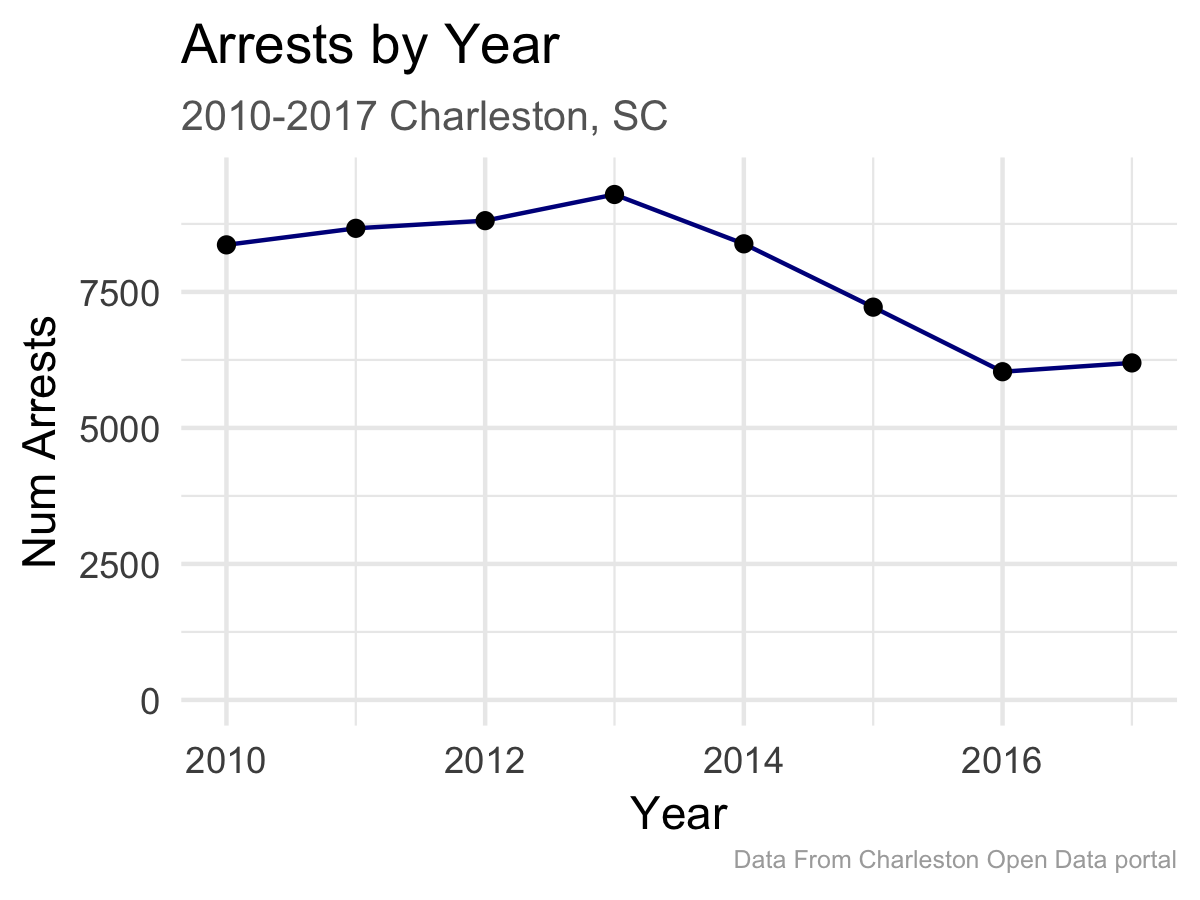
What caused the decline in the number of arrests after 2013?
To investigate this, it helps to look at the types of arrests and identify which arrests account for the decline.
The arrest data contains a descriptive field describing the type of arrest. For this time period, there are over 800 different descriptions so the first task is to group the arrest into categories.
Among the arrests for the top six categories,
arrests dropped for all except arrests for alcohol related
charges.
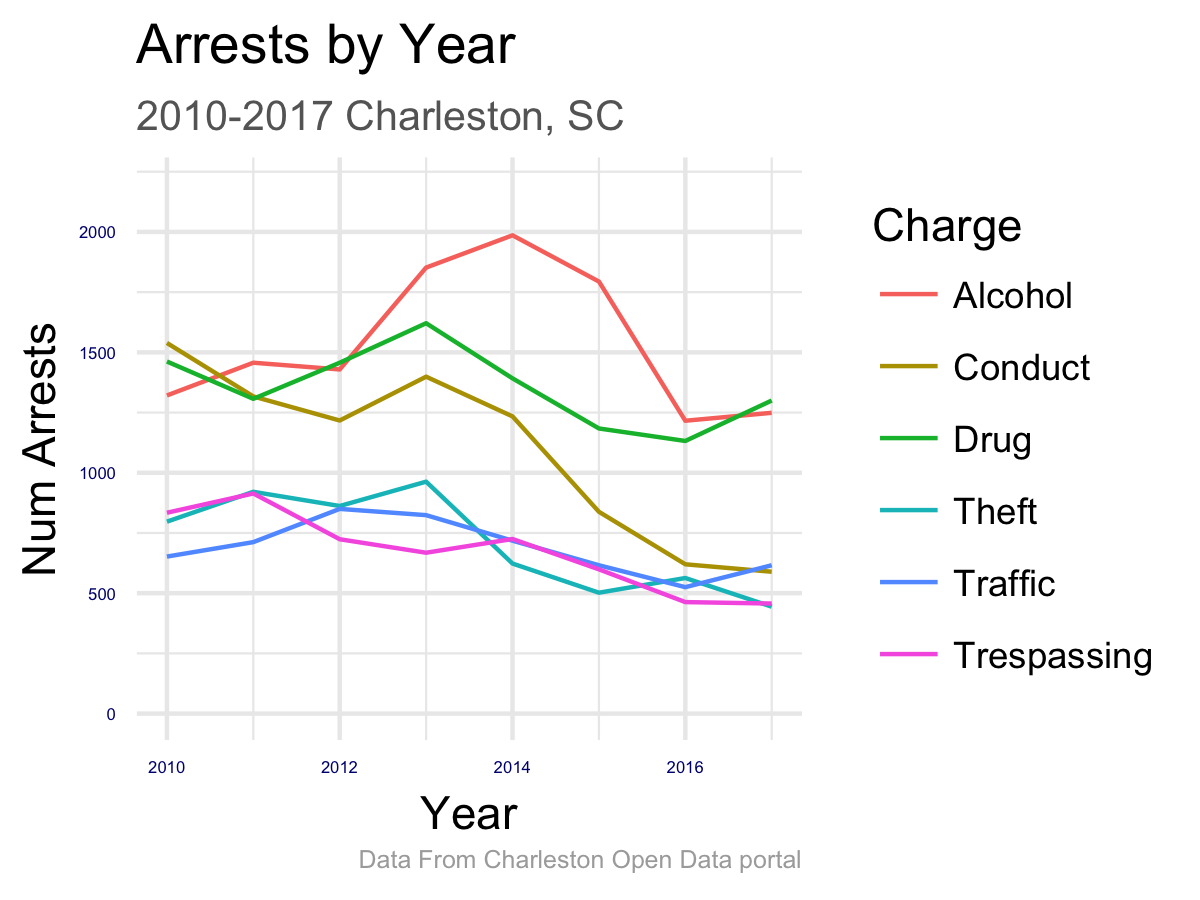
Conduct charges descreased substantially. Conduct charges include disorderly conduct, disturbing schools, obscenity charges, loud noise, littering, loitering, peddling, pedestrian, peeping tom, etc.
Charleston passed a nighttime bar moratorium which prohibits new bars from serving alcohol past midnight passed in September 2014 until September 2015 and took steps to handle King Street crowds.3
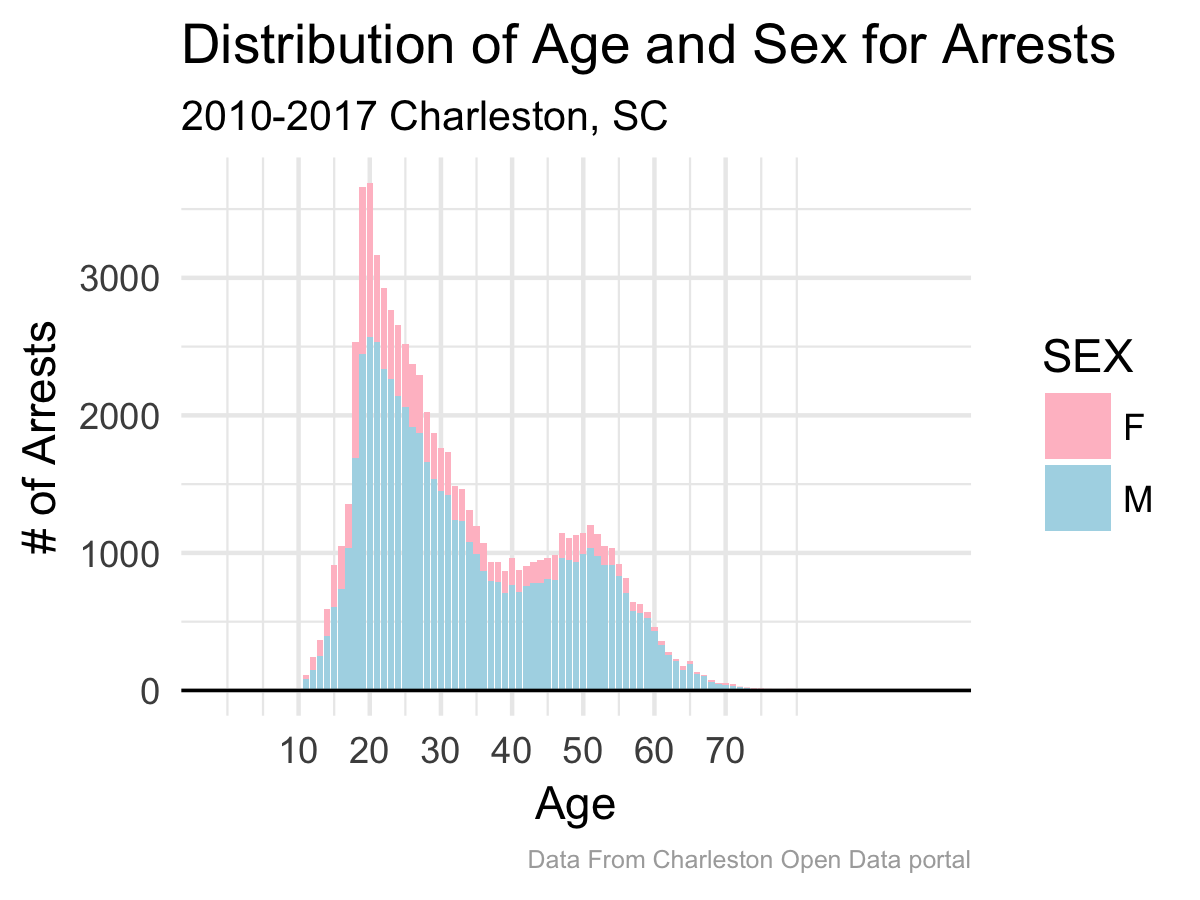
Males account for the large majority of arrests across all age groups. Females don’t get arrested as much, but they account for more arrests around age 20.
There are two peaks of arrests by age - one around age 20, and another age 50. The peak at age 20 is dominated by the white race, whereas the smaller age 50 peak has more black arrestees.
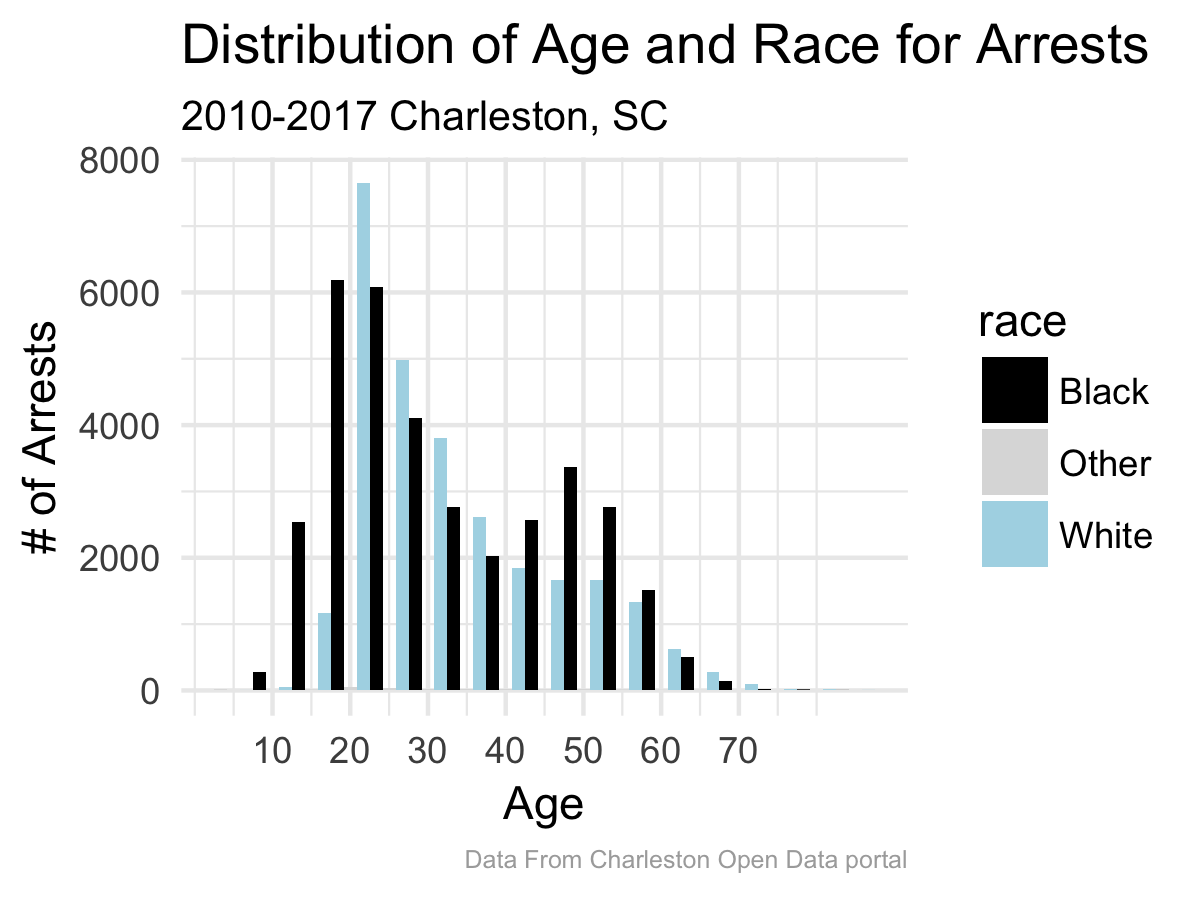
This remains true for previous years as well.
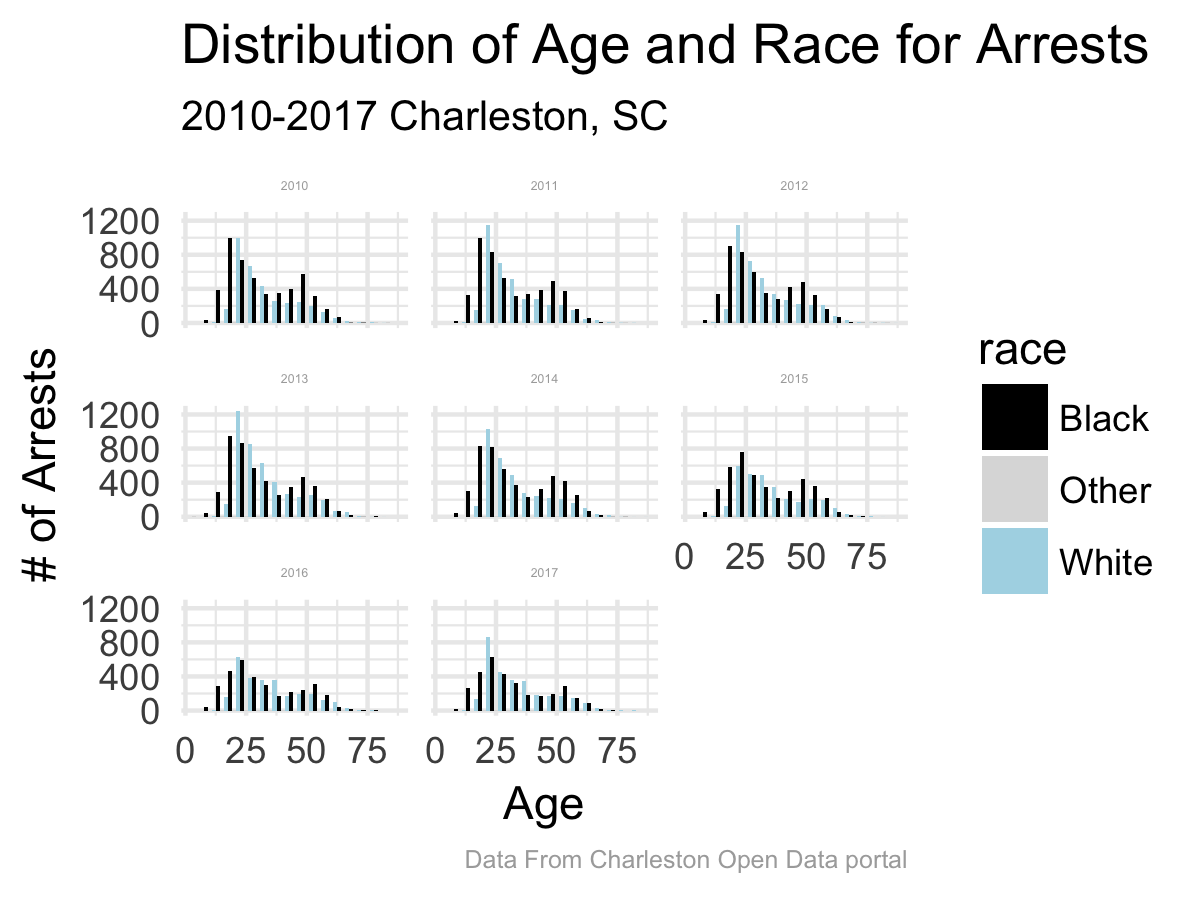
Why are people getting arrested?
Drug and alcohol accounts for about half of all arrests.
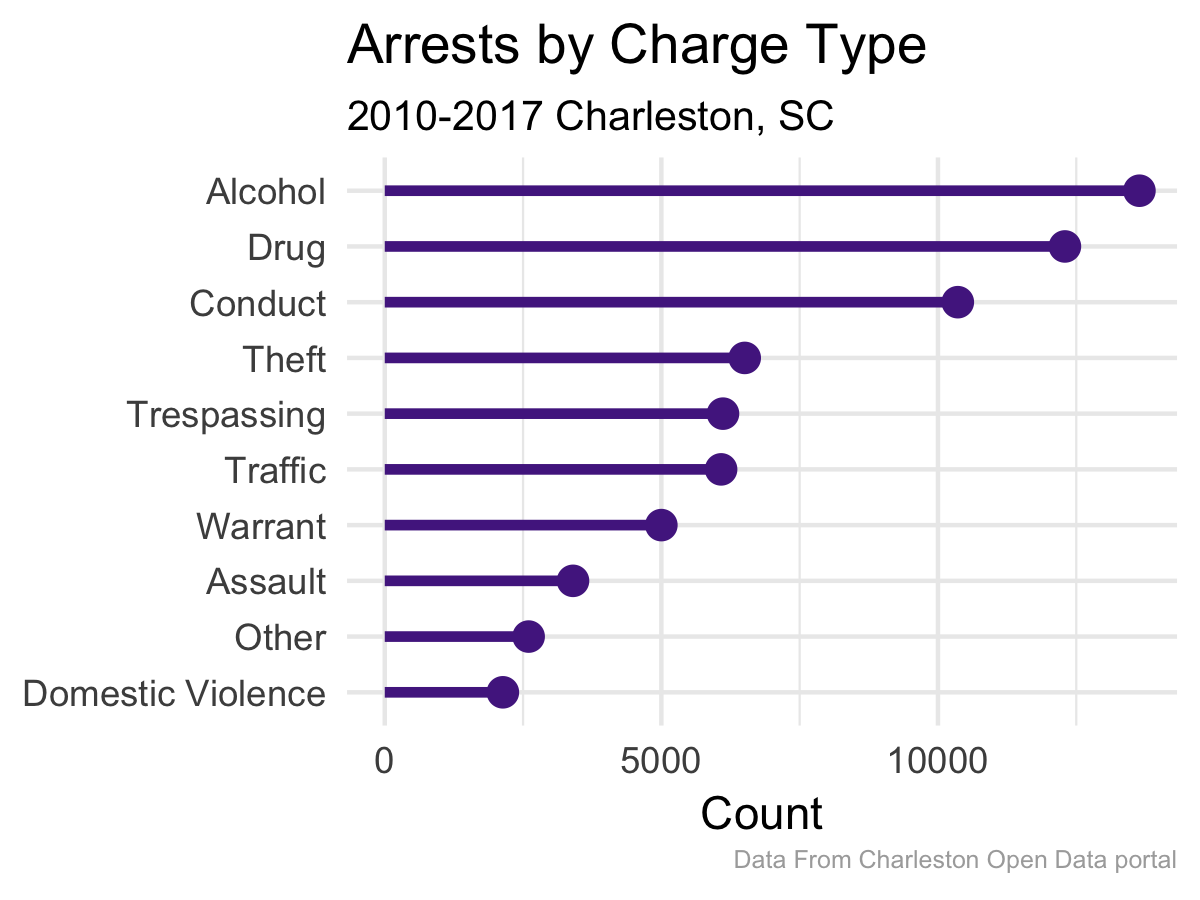
Notes
The arrest data has over 800 different descriptions for arrests. Grouping those arrest descriptions into was a manual process and is imperfect and will be refined.
This is iteration one of grouping this data.
References
Charleston Police Data Initiative Charleston Police Data Initiative↩
